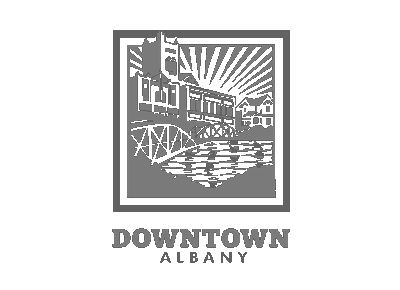Q: Is the City Council evaluating the entire transportation system?
A: Yes, but only for pavement condition for arterial, collector, and local streets owned and maintained by the city. Other transportation system needs are studied separately, such as the Transportation System Plan that identifies needs such as safety and capacity improvements. Many of the improvements are currently unfunded.
Q: What are arterial and collector streets and why are they a high priority?
A: Arterials are transportation corridors that generally have high traffic volumes and provide for trips of moderate to extended length. They provide connections to regional transportation routes. Examples are Waverly Drive, Queen Street, North Albany Road, and the State highway system.
Collectors gather and channel traffic from local streets to the arterial network. They provide a combination of local access and through movements. Examples are Marion Street, Jackson Street, Price Road, and Crocker Lane.
Local streets are low traffic volume roads that provide direct access to abutting land, such as the street in front of your house. They are not intended for long-distance through movements.
Q: What is the condition of Albany's streets?
A: Albany completes pavement condition assessments about every five years. Each street segment is evaluated on a scale of 0-100 to determine its Pavement Condition Index (PCI); zero is the worst, 100 is the best condition. Albany's most recent condition assessment was completed in 2021. The City's system-wide average PCI is 63, considered "fair." The current average PCI for only arterials and collectors is 71. See Condition of Albany's Streets for more discussion.
Q: What is the target PCI for arterial and collector streets?
A: The City Council defined an objective under Goal Two of the Great Neighborhoods Theme in Albany’s strategic plan to “Utilize available street funding to maintain arterial and collector streets to a minimum Pavement Condition Index (PCI) score of 60…” This target was selected by balancing desired levels of service, anticipated costs, and the fact that providing routine maintenance (i.e. overlays, etc.) is the most economical was to preserve a street. See Pavement Condition Goals and What That Costs for more information. No minimum PCI has been set for local streets.
Q: How much will it cost to maintain each arterial and collector street at or above PCI 60?
A: The estimated amount required to meet this goal is:
- $4 million a year (2023 dollars) to adequately maintain all arterials and collectors at or above PCI 60
- $3.5 million a year (2023 dollars) to adequately maintain all local streets currently in good and fair condition at or above PCI 60.
- $8.3 million a year (2023 dollars) to reconstruct and maintain all local streets currently in poor condition at or above PCI 60.
Costs are in 2023 dollars. Construction costs will increase over time. See Pavement Condition Goals & What That Costs for more information.
Q: How much money is available for pavement maintenance? Do we have enough to meet the PCI goal?
A: The funding gap is substantial. Current funding falls short of the required $12.8 million annual investment calculated to maintain streets at or above PCI 60. (2023 dollars)
See Pavement Condition Goals and What That Costs for more information.
Q: How did the streets get in this condition and why isn't enough money available to fix them?
A: All streets deteriorate over time. Lots of Albany streets are in poor condition. Funds are required to rebuild streets that have failed and to fund routine major maintenance such as overlays for streets that are in fair condition. Smaller, incremental improvements like crack sealing and periodic overlays are the least expensive way to preserve streets.
Over the years, Albany has considered various ways to pay for increased street work. Albany voters turned down a local fuel tax in 1982, 1991, and 2018. A general obligation bond in 1998 paid for reconstruction of parts of Elm Street, 34th Avenue, Santiam Road, Fifth Avenue, Salem Avenue and the southern portion of North Albany Road. Similar bond measures failed in 1995 and 2000. A transportation utility has been considered several times but not implemented due to concerns of overburdening citizens with utility fees.
Q: What are some potential funding alternatives for maintaining streets?
A: Several alternatives can be considered. Each has benefits and drawbacks. Some alternatives rely on increased fees or taxes paid by Albany residents while others rely on budgeting decisions that could impact other City services. A combination of options may be needed to generate enough revenue to make meaningful street improvements. These include:
- General Fund
- Franchise fees
- In-lieu-of franchise fees
- Stormwater service charges
- Fuel tax
- Transportation utility
- General Obligation bonds
- Local improvement district (LID)
See Potential Funding Alternatives for more information.
Q: Is the City pursuing any of these funding alternatives?
A: While voters turned downed a local fuel tax in 2018, the City Council has provided direction to raise stormwater service charges over time so that the stormwater utility is paying for stormwater improvements constructed with street projects. This will allow the City to complete more street maintenance work. However, if roads are going to be maintained, even at current levels, additional sources of revenue need to be identified. Without additional funding, streets will continue to deteriorate until the only options are to let them fall apart or rebuild them.
Q: Don't my property taxes pay for street maintenance?
A: No. Property taxes are not used for street maintenance. Property tax revenues for the City of Albany help pay for the police and fire departments and our libraries. Redirecting substantial amounts of property tax money to streets could reduce police and fire protection and limit library services.
The City's General Fund receives revenue from sources other than property taxes; the City Council has discussed but not decided whether any should be used for streets.
Q: Do other communities in Oregon charge for street maintenance?
Yes. Oregon communities have implemented various mechanisms to fund street maintenance. Local fuel taxes, transportation utilities, and general obligation bonds are the most common.
More than 32 cities in Oregon have fuel taxes that range from a penny to ten cents per gallon. Transportation utilities are used in 26 Oregon cities, with the monthly residential fee ranging from $2.85 to $16.81. More information can be found in the December 11, 2023, Council memo and presentation on the Past Presentations and Public Meetings page.
Q: What's next?
A: Albany residents can expect to read and hear a lot about the condition of our streets through 2024.Staff are prepared to talk about street conditions and what to expect if current maintenance funding strategies are unchanged. Council discussions about funding alternatives will continue as well.
Q: I couldn't find the answers to my questions. Who can I contact to get my questions answered?
A:


